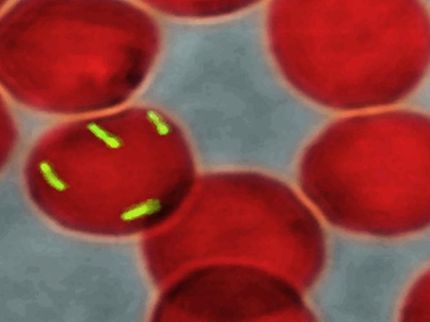New Study Unveils Structure of Key Component of Antibiotic Resistant Bacteria
Findings Could Offer Help in Fighting Resistant Strains of Gonorrhea
Advertisement
Working in close collaboration with other researchers, scientists from The Scripps Research Institute have uncovered for the first time the structural chemistry behind the "astonishing multi-functionality" of the bacterial GC (for gonococcal) Type IV pilus filament, which plays an essential role in Neisseria gonorrhoeae pathogenesis. The Type IV pili allow antibiotic-resistant strains of N. gonorrhoeae to escape the immune system and cause persistent and recurrent gonorrhea infections.
The detailed structural chemistry of these filaments unveiled by the study provides new insights into the filaments' basic assembly and diverse functions, and may offer therapeutic targets and other novel treatment options.
According to the Centers for Disease Control (CDC), drug-resistant strains of gonorrhea are on the increase, making successful treatment of this sexually transmitted disease all the more difficult. These strains continue to emerge, the agency said, despite the fact that overall infection rates have dropped, reaching an all-time low in 2004. Gonococcal strains have grown resistant to an ever-widening variety of treatments including penicillins, tetracyclines, spectinomycin, and fluoroquinolones. Newer treatments have not been spared, either, the CDC said-resistance to ciprofloxacin and ofloxacin already exceeds 40 percent in some Asian countries.
Using cryo-electron microscopy and x-ray crystallography, the researchers were able to determine in detail the GC Type IV pilus structure, shedding light on the filaments' multi-functionality, which includes bacterial movement and microcolony formation, as well as their assembly-disassembly process. These new findings, the study noted, suggest that there may be a unified assembly mechanism for these types of bacterial filaments.
One major puzzle of the GC Type IV pilus assembly process involves the bacteria's ability to continually modify the sequence of the pilin protein subunit to avoid a protective immune response. This ability to evade the immune system most often results in persistent, repeated gonorrheal infections, which in turn may lead to infertility, arthritis, endocarditis, and meningitis. The high resolution GC Type IV pilus structure showed for the first time the precise placement of the pilin subunits.
"The pilin subunit regions that are most accessible to antibodies are also the most variable," said Lisa Craig, formerly a research associate at Scripps Research, now assistant professor at Simon Fraser University, Burnaby, British Columbia, Canada. "These regions protrude from the filament surface and obscure the more conserved regions. To design effective Type IV pilus-based vaccines, it will be necessary to redirect the immune response to the less accessible regions on the pilus filament, which are more likely to elicit broadly neutralizing antibodies. These findings renew hope for generating pilus-based vaccines for gonorrhoea."
The Type IV pili cover the surface of gonococci and are present on virtually all other Gram-negative bacteria. The high resolution GC Type IV pilus structure serves as a prototype for all Type IV pili, a discovery that could provide researchers broad insights into the filaments' architecture and diverse function.
Original publication: J. Tainer, L. Craig, N. Volkmann, A. S. Arvai, M. E. Pique, M. Yeager, E. H. Egelman; "Type IV Pilus Structure by Cryo-Electron Microscopy and Crystallography: Implications for Pilus Assembly and Functions"; Molecular Cell 2006.
Other news from the department science
Most read news
More news from our other portals
See the theme worlds for related content
Topic world Antibodies
Antibodies are specialized molecules of our immune system that can specifically recognize and neutralize pathogens or foreign substances. Antibody research in biotech and pharma has recognized this natural defense potential and is working intensively to make it therapeutically useful. From monoclonal antibodies used against cancer or autoimmune diseases to antibody-drug conjugates that specifically transport drugs to disease cells - the possibilities are enormous

Topic world Antibodies
Antibodies are specialized molecules of our immune system that can specifically recognize and neutralize pathogens or foreign substances. Antibody research in biotech and pharma has recognized this natural defense potential and is working intensively to make it therapeutically useful. From monoclonal antibodies used against cancer or autoimmune diseases to antibody-drug conjugates that specifically transport drugs to disease cells - the possibilities are enormous




























































